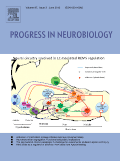
Annals of Neurosciences
Scope & Guideline
Advancing Insights into Neural Mechanisms
Introduction
Aims and Scopes
- Neurobiology and Neurophysiology:
The journal publishes research that elucidates the biological and physiological mechanisms underlying neural functions, disorders, and recovery processes, employing techniques such as electrophysiology, neuroimaging, and animal models. - Clinical Neuroscience:
Research addressing the clinical aspects of neurological disorders, including diagnosis, treatment, and rehabilitation strategies, is a core focus, encompassing studies on conditions such as epilepsy, stroke, and neurodegenerative diseases. - Psychology and Behavioral Neuroscience:
The intersection of psychology and neuroscience is explored through studies on cognitive processes, emotional regulation, and the impact of mental health interventions on brain function. - Integrative and Complementary Approaches:
The journal highlights research on alternative therapies, such as yoga and mindfulness, and their effects on neurological health and cognitive function, promoting a holistic view of treatment. - Public Health and Neuroscience Policy:
Scholarly articles addressing the implications of neuroscience research on public health policies, healthcare workforce, and societal impacts are integral, aiming to bridge the gap between research and practice.
Trending and Emerging
- Neurotechnology and Digital Health:
There is a rising focus on the development and application of neurotechnology, including devices and apps for monitoring cognitive health and enhancing neuro-rehabilitation, demonstrating the integration of technology in neuroscience. - Impact of Lifestyle and Holistic Interventions:
Research on the effects of lifestyle factors, such as physical activity, yoga, and dietary interventions on cognitive health and mental well-being is increasingly prominent, highlighting a shift towards preventative and integrative approaches. - Mental Health and Neurodevelopmental Disorders:
An emerging trend is the exploration of mental health issues and neurodevelopmental disorders, with studies examining psychosocial interventions and their effectiveness in improving outcomes for affected individuals. - Neuroinflammation and Neurodegeneration:
There is growing interest in the role of neuroinflammation in neurodegenerative diseases, with research investigating new therapeutic targets and the underlying mechanisms of these conditions. - Public Health Neuroscience:
Research addressing the societal impacts of neurological disorders and the implications for public health policy is gaining attention, reflecting a broader understanding of the role of neuroscience in health care systems.
Declining or Waning
- Traditional Pharmacological Approaches:
There is a noticeable decrease in publications focused solely on traditional pharmacological treatments for neurological disorders, as the field shifts towards exploring novel therapies and integrative approaches. - Animal Models of Neurological Disorders:
Research employing animal models is less frequently featured, possibly reflecting a growing emphasis on human studies and clinical trials that offer more immediate relevance to patient care. - Basic Neuroscience Research without Clinical Application:
There appears to be a waning interest in purely basic neuroscience studies that do not have direct clinical applications or implications, as the journal increasingly prioritizes translational research.
Similar Journals

EUROPEAN JOURNAL OF NEUROSCIENCE
Connecting Biology, Psychology, and Medical ScienceEuropean Journal of Neuroscience is a prestigious, peer-reviewed journal published by Wiley, dedicated to advancing our understanding of the complex field of neuroscience. With an impact factor that positions it in the Q2 category of general neuroscience, this journal serves as a vital platform for researchers and professionals working at the intersection of biology, psychology, and medical science. Since its inception in 1989, the journal has been committed to publishing high-quality research that spans various topics within neuroscience, thus facilitating the exchange of innovative ideas and methodologies. Despite being a subscription-based journal, it attracts a diverse readership and has achieved significant recognition, evidenced by its Scopus rank of 33 out of 113 in its field, placing it in the 71st percentile. The European Journal of Neuroscience not only fosters groundbreaking studies but also encourages collaboration among scholars, making it an indispensable resource for students, researchers, and professionals eager to stay informed about the latest scientific advancements.

CORTEX
Exploring the Frontiers of Cognitive NeuroscienceCORTEX is a premier international journal published by Elsevier Masson, focusing on the cutting-edge areas of cognitive neuroscience, psychology, and neurology. With an impressive impact factor that places it in Q1 quartiles across multiple categories such as Cognitive Neuroscience and Neuropsychology, this journal serves as a vital resource for researchers, clinicians, and students alike. Established in 1964, CORTEX has continued to excel in disseminating high-quality scholarly work, offering insights that significantly enhance our understanding of the brain's functioning and behavior. Although not an open-access publication, it provides various access options to ensure the dissemination of knowledge is as wide-reaching as possible. As the field of cognitive psychology evolves, CORTEX remains at the forefront, fostering an environment for interdisciplinary collaboration and innovation. Researchers seeking to stay engaged with the latest advancements will find CORTEX an indispensable tool for their professional development.

Cognitive Neurodynamics
Fostering Dialogue in Cognitive Research.Cognitive Neurodynamics is a leading journal in the field of cognitive neuroscience, published by Springer in the Netherlands. With an ISSN of 1871-4080 and an E-ISSN of 1871-4099, this journal has established itself as a prominent platform for innovative research from its inception in 2007, continuing to enrich the academic landscape through 2024. Recognized for its significant contributions, Cognitive Neurodynamics holds a Q2 quartile ranking in cognitive neuroscience and impressively ranks #27 out of 115 in the Scopus database, placing it in the 76th percentile among its peers. While the journal is not open access, it offers a wealth of studies focusing on the intricate dynamics of cognitive processes and neurobiological mechanisms, making it essential reading for researchers, professionals, and students alike. Its objective is to bridge the gap between theoretical insights and practical applications, fostering a deeper understanding of cognition through multidisciplinary approaches. Explore the latest advancements in cognitive dynamics and contribute to the evolving dialogue within this fascinating field.

TRENDS IN NEUROSCIENCES
Pioneering Insights for Neuroscience ProfessionalsTRENDS IN NEUROSCIENCES, published by CELL PRESS, is a leading journal in the field of neuroscience, offering cutting-edge insights and important developments in the rapidly evolving landscape of brain research. With an impressive Impact Factor and ranking in the top quartile (Q1) of the category for Neuroscience (miscellaneous), it is positioned as a vital resource for researchers and professionals seeking to stay abreast of the latest discoveries and trends from 1978 to the present. Specifically ranked #3 out of 113 in General Neuroscience by Scopus, this journal promotes the interdisciplinary exchange of ideas and knowledge, making it an essential platform for students and experienced scholars alike. Although it is not an Open Access journal, its value lies in its rigorous peer-review process and commitment to maintaining the highest standards of academic integrity. By continuing to explore the complexities of neural processes and behavior, TRENDS IN NEUROSCIENCES plays a crucial role in shaping the future of neuroscience research and education.

NEUROSCIENCE LETTERS
Pioneering Research for a Deeper Neural Insight.NEUROSCIENCE LETTERS is a distinguished journal published by ELSEVIER IRELAND LTD, focusing on disseminating impactful research across the field of neuroscience. With its ISSN 0304-3940 and E-ISSN 1872-7972, the journal serves as a vital platform for researchers, professionals, and students aiming to explore the complexities of nervous system function and related disorders. Since its inception in 1975, NEUROSCIENCE LETTERS has contributed significantly to the field, currently positioned in the Q3 category for Miscellaneous Neuroscience, with a respectable Scopus rank of 52/113, placing it in the 54th percentile among its peers. The journal is published in Ireland and offers a comprehensive repository of scientific insights, methodologies, and innovative findings that advance our understanding of neurological phenomena. While not an open-access journal, it remains an essential resource for the latest advances in neuroscience research and the academic community’s collective knowledge.

EXPERIMENTAL BRAIN RESEARCH
Fostering Innovative Discoveries in Experimental NeuroscienceEXPERIMENTAL BRAIN RESEARCH is a renowned journal published by SPRINGER, dedicated to advancing understanding in the field of neuroscience. With a history dating back to 1966, this journal offers valuable insights into the mechanisms of brain function and neurological disorders, making it a vital resource for researchers, professionals, and students alike. While it currently holds a Q3 classification in the field of Neuroscience (miscellaneous) and ranks #73 out of 113 in Scopus's General Neuroscience category, it continually contributes to fostering innovative research and collaborative dialogue. The journal is not open access, ensuring that although content is subscription-based, it maintains a high standard of peer review and scholarly rigor. By covering a breadth of topics relevant to both experimental and theoretical aspects of brain research, EXPERIMENTAL BRAIN RESEARCH serves as an essential platform for disseminating cutting-edge discoveries and theories in the dynamic realm of neuroscience.

Neuropsychologia
Fostering Knowledge in Behavioral and Cognitive NeuroscienceNeuropsychologia, published by PERGAMON-ELSEVIER SCIENCE LTD, is a premier journal that delves into the intersections of psychology and neuroscience, specifically focusing on behavioral and cognitive processes. Since its inception in 1963, this esteemed journal has been a vital platform for researchers, professionals, and students, showcasing innovative studies and advancements in the fields of Behavioral Neuroscience, Cognitive Neuroscience, and Experimental Psychology. With a commendable impact factor, placing it in the Q2 category across multiple disciplines, Neuropsychologia is recognized for its contribution to the scientific community, ranking among the top journals in both Experimental and Cognitive Psychology and Neuroscience. The journal's commitment to excellence is evident in its rigorous peer-review process and its mission to disseminate cutting-edge research, making it an invaluable resource for those seeking to expand their knowledge and insights in neuropsychology. For further reading, the journal is accessible in both print and digital formats, ensuring that researchers can easily engage with the latest findings and theoretical advancements in this dynamic field.

NEUROSCIENCE RESEARCH
Exploring the Depths of Neuroscience InnovationNEUROSCIENCE RESEARCH, published by Elsevier Ireland Ltd, is a leading journal in the field of neuroscience, with a notable reputation for disseminating high-quality research that spans a variety of topics within the discipline. With an ISSN of 0168-0102 and an E-ISSN of 1872-8111, this journal serves as a vital platform for both established researchers and emerging voices in the field. Ranking in the Q2 quartile in both Medicine and Neuroscience categories, it has been recognized as a reliable source of innovative findings since its inception in 1984, with continuous publication through 2024. Although it does not currently offer Open Access options, the journal is indexed in Scopus, holding a significant position at Rank #48/113 in General Neuroscience, reflecting its contribution to advancing the understanding of neural mechanisms across various contexts. With its address anchored in Ireland, NEUROSCIENCE RESEARCH plays an essential role in bridging scientific inquiry and practical applications, making it an indispensable resource for researchers, professionals, and students dedicated to the burgeoning field of neuroscience.

PROGRESS IN NEUROBIOLOGY
Leading the Charge in Neurobiological DiscoveriesPROGRESS IN NEUROBIOLOGY is a prestigious journal dedicated to advancing the field of neuroscience, published by Pergamon-Elsevier Science Ltd. With an impressive impact factor, it stands as a critical resource for researchers, professionals, and students alike, featuring rigorous peer-reviewed articles that explore the latest developments in neurobiology. The journal has established itself as a leading publication, ranked in the Q1 category for Neuroscience (miscellaneous) and holding a notable 13/113 rank in General Neuroscience per Scopus metrics, placing it in the top 12% of its field. Since its inception in 1959, PROGRESS IN NEUROBIOLOGY has covered a wide array of topics, from molecular mechanisms to cognitive processes, fostering a comprehensive understanding of brain functions. While the journal is not open access, it ensures accessibility to profound knowledge through institutional subscriptions. Researchers and scholars will find critical analyses and innovative research that are pivotal for both foundational knowledge and cutting-edge investigations in the neuroscience realm.

Frontiers in Systems Neuroscience
Connecting minds through groundbreaking research.Frontiers in Systems Neuroscience is a premier open-access journal published by FRONTIERS MEDIA SA, dedicated to advancing the understanding of the complex systems that underpin neural function and behavior. Established in 2007 and based in Switzerland, this journal has gained recognition for its rigorous peer-reviewed articles that contribute significantly to the fields of Cellular and Molecular Neuroscience, Cognitive Neuroscience, and Developmental Neuroscience. As of 2023, it proudly holds a Q2 ranking in several neuroscience categories, reflecting its high impact and relevance in the academic community. The journal is accessible to researchers, professionals, and students worldwide, providing a platform for innovative research while promoting collaborative scientific dialogue. With a commitment to open access, Frontiers in Systems Neuroscience ensures that groundbreaking findings are readily available to enhance knowledge sharing across the globe. This makes it an essential resource for anyone looking to stay at the forefront of neuroscience research.